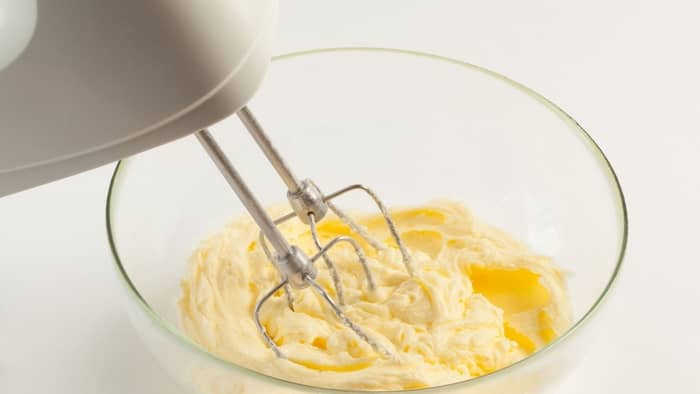Last Updated on May 15, 2022
Martha Stewart is famous for her many delicious recipes. One of the most popular recipes on her website is the lemon buttercream frosting by Martha Stewart. The frosting is creamy, sweet, and has a wonderful lemon taste.
This frosting recipe is easy to create, which is something that bakers of all experience levels can appreciate. It only contains three ingredients and will come together in a matter of minutes. The use of fresh lemon juice and lemon zest really makes a difference.
Tips For Making Lemon Buttercream Frosting By Martha Stewart
Martha Stewart’s lemon buttercream frosting is delicious and pairs well with so many desserts. It requires three simple ingredients: lemon, butter, and powdered sugar. Fresh lemon is key, as the recipe uses both lemon juice and lemon zest.
The process of making Martha Stewart’s lemon buttercream is simple. For best results, you will want to use a hand or stand mixer to make the process easier and get a creamier frosting. First, you start out by mixing three sticks of room temperature unsalted butter at medium speed for about two minutes.
Once the butter is pale and creamy, sift three cups of powdered sugar and then add half a cup of powdered sugar at a time. Allow each addition to fully incorporate, scraping down the sides of the bowl. It should take about five minutes total to incorporate the powdered sugar into the butter.
Add in two tablespoons of lemon juice and one tablespoon of lemon zest to the frosting. Beat the frosting until the lemon is incorporated. To ensure that your frosting turns out smooth, creamy, and flavorful, here are some handy tips to follow.

Use room temperature butter
It is very important to use room-temperature butter when making frosting. If the butter is too cold, it will be difficult to mix and may even begin to curdle. Generally, to soften butter, you will let it sit out at room temperature for about an hour.
Room temperature butter should be soft enough that it leaves a small indent when you squeeze it. It should not be runny or melted, as this will not work to make frosting.
If you are in a time crunch, you can microwave two cups of water for two minutes and then remove it from the microwave. Then, place the butter cut into slices in the microwave for 10 minutes to soften. You can also fill a glass with hot water, dump it out and place the hot glass over a stick of butter for five minutes to soften.
Sift your powdered sugar
Though sifting powdered sugar can be a tedious task, it is not one you want to skip. Sifting your powdered sugar removes any lumps, creating a smooth, creamy buttercream that is light and fluffy.
Use fresh lemon juice
Using fresh lemon juice will make this frosting extra delicious. Though you can use bottled lemon juice or lemon extract, it won’t have that fresh taste that juicing a lemon gives you.
Using fresh lemon extract also gives the frosting more lemon flavor. Though you can skip adding it, it will give the frosting a lovely refreshing flavor.

What Does Lemon Buttercream Frosting Go Well With?
This lemon buttercream is amazing when paired with lemon cake or lemon cupcakes. It also goes great with vanilla cake, white cake, yellow cake, almond cake, pound cake, and citrus cake. In addition, it tastes amazing with sugar cookies, cupcakes, blondies, and lemon bars.
How To Store Lemon Buttercream Frosting
Cakes and desserts frosted with lemon buttercream frosting can stay at room temperature for one to three days in an airtight container. After that, they should be stored in the fridge for up to five days.
Any leftover frosting from decorating should be stored in the fridge for up to one week. When ready to use, let it reach room temperature and then re-whip on medium speed with a mixer for around 30 seconds.
Can you freeze buttercream frosting?
You can freeze buttercream for up to three months in the freezer in an airtight container. When ready to use, place it in the fridge overnight and then bring it to room temperature. Before using, re-whip the frosting for about 3o seconds on medium speed with your mixer.
You can also freeze cakes decorated in lemon buttercream frosting. Place the cake in the freezer uncovered for around one hour and then wrap it in a layer of plastic wrap and then a layer of aluminum foil. Return the cake to the freezer for up to six months and when ready to eat let it thaw overnight in the fridge or at room temperature for two hours.
Making Delicious And Creamy Lemon Buttercream
Lemon buttercream frosting is easy to make and only requires unsalted butter, powdered sugar, and lemon. It is rich, creamy, and has a nice tang from the lemon. Using fresh lemon juice and lemon zest really takes it to the next level.
Lemon buttercream goes well with lemon cake, vanilla cake, white cake, yellow cake, almond cake, citrus cake, and pound cake. It also goes great with sugar cookies, blondies, and lemon bars. It also tastes great when paired with strawberry, blueberry, or raspberry filling.
Do you have any questions regarding making lemon buttercream frosting by Martha Stewart? If so, please ask any questions about making lemon buttercream in the comments.
FAQs
Does Lemon Frosting Need to be Refrigerated?
If you have leftover lemon frosting or are not using the frosting right away, you should store it in the fridge. It can last for up to one week in an airtight container in your fridge.
What Flavor Goes Well With Lemon Cake?
There are many flavors that go well with a lemon cake including strawberry, blueberry, raspberry and vanilla. Lime and orange also go well with lemon since they are all citrus fruit.
How Can You Ensure That Your Buttercream Icing is Light and Fluffy?
To ensure your buttercream frosting is light and fluffy, use room temperature butter and sift your powdered sugar. Be sure to beat your frosting for several minutes as well with your stand mixer.

Ever since she was a young girl, Anna has been a lover of desserts. As an adult, she enjoys
baking a variety of desserts from cakes, cookies, brownies, bread, and more from scratch. She
enjoys sharing her passion for baking with others who also have a sweet tooth. From properly
measuring ingredients to making sure they are the correct temperature, Anna knows the
importance small details can make in baking. She wants to share her experience with others in
hopes they can make the most delicious baked goods. When she’s not busy blogging, Anna
enjoys trying new recipes in the kitchen.


